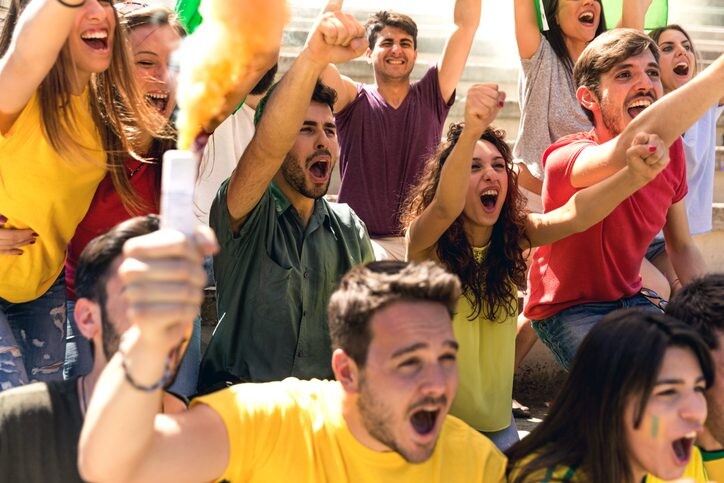Running News Daily
Running News Daily is edited by Bob Anderson. Send your news items to bob@mybestruns.com Advertising opportunities available. Train the Kenyan Way at KATA Kenya and Portugal owned and operated by Bob Anderson. Be sure to catch our movie A Long Run the movie KATA Running Camps and KATA Potato Farms - 31 now open in Kenya! https://kata.ke/
Index to Daily Posts · Sign Up For Updates · Run The World Feed
Here’s why you run faster in a crowd
For many runners, the familiar struggle of maintaining motivation through training sessions is transformed into a surge of energy on race day, when they’re surrounded by fellow competitors and enthusiastic spectators. Sure, being in a crowd can make you feel excited, but have you ever wondered why, exactly, you’re capable of kicking it up a notch in these moments? The concept of performing better in front of others is a psychological phenomenon known as social facilitation—something that has been studied for a long time. You really can run faster on race day, and here’s why.
Why do people act differently when watched?
Social facilitation is the idea that an audience can serve as a potent motivator, and while the concept is far from new to science, only recently have neuroscientists begun to determine what happens in the brain when people are being watched, and why, exactly, their performance improves. As reported recently in Discover Magazine, humans are reward-motivated, whether by a dollar amount or by an adoring audience, and it seems that during social facilitation, social areas of the brain interact with value areas to help us perform better.

In a study published in Social Cognitive and Affective Neuroscience, researchers investigated the neural mechanisms behind social facilitation. Participants engaged in a task while undergoing functional magnetic resonance imaging (fMRI), revealing heightened activity in brain regions associated with processing the presence of an audience as a rewarding stimulus. When we have an audience, the brain processes the resulting stimuli as rewards that inspire enhanced performance and the observed boost in motivation and ability.
Does it always work?

Research emphasizes that the effectiveness of social facilitation is context-dependent. A report in the International Review of Sport and Exercise Psychology, analyzin
g 82 studies with more than 7,000 participants, demonstrated that the type of task people engaged in significantly influenced social facilitation outcomes.
Generally, conditioning activities like running or skiing tend to thrive with an audience, while tasks requiring co-ordination may experience hindrances. However, the absence of spectators during the COVID-19 pandemic uncovered intriguing exceptions. A 2021 study compared results from the World Cup biathlon during the pandemic, when athletes did not have an audience, to results during previous World Cups. Research showed differences between men and women athletes, with male participants excelling in conditioning tasks (skiing) with an audience, but struggling in co-ordination tasks (shooting). Conversely, female athletes exhibited better shooting performance with an audience but faced challenges in the skiing portion.
The discovery of these gender-specific distinctions highlights the need for more inclusive research, as historical studies predominantly focused on male participants. Future research might also explore the potential of visualizing an audience to spark motivation, offering intriguing possibilities for mental training techniques.
by Keeley Milne
Login to leave a comment




